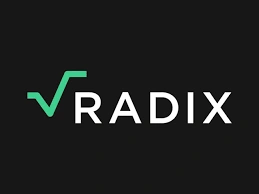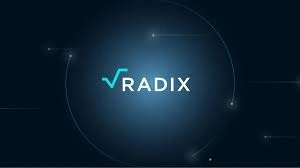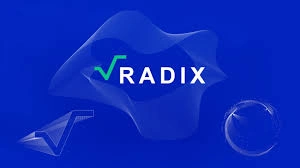Radix (XRD): Building Next-Gen DeFi Infrastructure
Table of Contents

If you’re looking for a blockchain built from the ground up for DeFi, then Radix (XRD) might be exactly what the space needs. With many smart-contract platforms stretching under growth, Radix promises a “radically better stack” combining a developer-friendly language, asset-oriented smart contracts, and a scalable consensus mechanism. Whether you’re a developer who wants to build powerful dApps or an investor watching infrastructure plays, this article will walk you through how XRD works, what makes Radix stand out, and what you should watch before diving in. Let’s unpack the future of DeFi infrastructure together.
For more insights and updates on the latest trends in cryptocurrency, be sure to check out our Nifty Finances platform, which serves as your gateway to smarter financial decisions in the digital economy.

What is Radix (XRD)? Platform Overview & Purpose
Radix is a layer-1 smart contract platform purpose-built for Decentralized Finance (DeFi). Unlike traditional blockchains that adapted to DeFi after their launch, Radix was designed from the ground up to solve the scalability, security, and usability challenges that have limited the growth of decentralized applications. Its vision is simple yet ambitious: to make Web3 and DeFi accessible, safe, and intuitive for everyone — from developers to everyday users.
Building a Foundation for Scalable DeFi
At its core, Radix provides a full-stack, DeFi-optimized environment that reimagines how decentralized apps are built, deployed, and used. Where other blockchains focus primarily on throughput, Radix takes a holistic approach — prioritizing developer experience, user security, and composability. The platform’s architecture is designed to eliminate the pain points that have hindered DeFi adoption, such as complex programming models, fragmented liquidity, and exploit-prone smart contracts.
Radix achieves this through three key components:
- Radix Engine: A next-generation execution environment that manages digital assets natively rather than through arbitrary code, reducing the risk of hacks and bugs.
- Scrypto Programming Language: A developer-friendly language built specifically for DeFi, enabling intuitive asset handling and reusable blueprints.
- Cerberus Consensus: A unique, sharded consensus protocol that supports massive scalability without sacrificing security or composability.
This combination ensures that as DeFi applications scale, they remain interoperable and efficient across the Radix network.
Mission: Making Web3 & DeFi Intuitive for Everyone
Radix’s mission is to make DeFi usable for mainstream adoption. Today’s Web3 ecosystem is powerful but complex — users face steep learning curves, and developers navigate security risks and fragmented tooling. Radix aims to remove these barriers by providing an end-to-end DeFi stack where every layer is purpose-built for simplicity, safety, and user experience.
Key aspects of this mission include:
- For Developers: A robust toolkit (Scrypto and the Radix Engine) that allows them to focus on building logic, not securing low-level code.
- For Users: Simplified interactions through human-readable transactions and predictable network behavior.
- For Institutions: A secure and composable infrastructure for building scalable financial products without worrying about cross-chain risks or contract exploits.
In essence, Radix seeks to turn DeFi from an experimental technology into a mainstream financial ecosystem that anyone can use confidently.
The Native Token: XRD
The XRD token is the backbone of the Radix network. It plays multiple roles across the ecosystem, including:
- Transaction Fees: XRD is used to pay for network operations, ensuring fair and sustainable participation.
- Staking and Security: Users can stake XRD to support network validators and earn rewards while securing the network.
- Incentives: XRD powers DeFi incentives, developer rewards, and ecosystem growth initiatives.
- Governance: As Radix evolves, XRD will serve as the foundation for decentralized governance decisions.
By anchoring value and security to the XRD token, Radix ensures that all participants — users, validators, and developers — share aligned incentives.
Ecosystem Components
The Radix ecosystem is built around an integrated suite of tools and services that enhance usability and accessibility:
- Radix Wallet: A user-friendly wallet for managing XRD, interacting with dApps, and participating in DeFi.
- Radix Connect: Enables secure communication between the wallet and web applications.
- Developer Stack: Includes Scrypto, blueprints, and APIs for fast and safe dApp development.
- Protocol Layers: From consensus (Cerberus) to execution (Radix Engine), every layer is optimized for asset security and high throughput.
Radix (XRD) represents a new generation of blockchain infrastructure — one that doesn’t just scale transactions but scales DeFi usability and safety. With its native XRD token, developer-first design, and composable architecture, Radix is positioning itself as the foundation for a truly open, efficient, and user-friendly decentralized economy.

Core Technology & Architecture Behind Radix
Radix stands out in the blockchain landscape for its purpose-built architecture, designed to make DeFi and Web3 development secure, scalable, and accessible. Instead of retrofitting solutions to old infrastructure, Radix rebuilt the stack from the ground up — combining its Cerberus consensus mechanism, Radix Engine execution environment, and Scrypto programming language into a unified, DeFi-optimized platform. This layered design enables high performance, composability, and a superior user experience without sacrificing decentralization or safety.
Cerberus: A Scalable & Sharded Consensus Mechanism
At the foundation of Radix’s architecture is Cerberus, a novel consensus protocol built to overcome the scalability limitations of traditional blockchains. Most networks face a trade-off between throughput and composability — when they shard, they often break interoperability between applications. Cerberus solves this through a cross-shard consensus model that allows infinite linear scalability while maintaining full composability across shards.
Here’s how it works:
- Sharded Structure: The Radix ledger is divided into many parallel shards, each processing transactions independently.
- Cross-Shard Consensus: Cerberus synchronizes transactions that span multiple shards, ensuring atomic finality — meaning a transaction either completes everywhere or not at all.
- Linear Scalability: As network activity increases, new shards can be added without disrupting communication or security between existing ones.
This architecture allows Radix to process thousands of transactions per second, supporting the kind of throughput DeFi needs to scale globally. By contrast, most blockchains either sacrifice speed (like Ethereum) or composability (like certain Layer-2s). Cerberus delivers both.
Radix Engine & Scrypto: The Developer Environment
Building secure and efficient DeFi applications has long been one of Web3’s biggest hurdles. Radix addresses this with its Radix Engine — a purpose-built execution environment that treats assets as first-class objects, not just lines of code.
In most blockchains, developers must programmatically define how tokens behave, which can lead to vulnerabilities and exploits. The Radix Engine eliminates this by managing asset behavior natively at the protocol level, ensuring that tokens and smart contracts interact safely and predictably.
Complementing the engine is Scrypto, Radix’s custom programming language designed specifically for DeFi. Scrypto introduces asset-oriented programming, meaning developers can focus on financial logic rather than low-level security or data management.
Key benefits include:
- Reduced vulnerabilities: Fewer coding errors that lead to hacks or fund losses.
- Reusable blueprints: Developers can build modular, composable components for faster app creation.
- Improved composability: Applications can seamlessly interact, fostering a rich, interconnected DeFi ecosystem.
Together, Radix Engine and Scrypto create a developer-friendly environment that dramatically reduces the complexity and risk of DeFi development.
User Experience Innovations
Radix also revolutionizes the user experience, an often-overlooked area in blockchain. Its Radix Wallet and supporting technologies simplify interaction between users and decentralized applications:
- Human-readable transactions: Instead of cryptic wallet addresses, users see clear transaction details, reducing mistakes and improving trust.
- Secure dApp integration: Through Radix Connect, wallets communicate with dApps without exposing private keys.
- Intuitive interface: The wallet provides a streamlined, consumer-grade experience, bridging the gap between traditional finance and DeFi.
These innovations aim to make interacting with DeFi as natural as using online banking — a critical step toward mass adoption.
Eliminating Common DeFi Bottlenecks
The combined effect of Radix’s architecture directly tackles the core bottlenecks of today’s DeFi platforms:
- Speed: Cerberus enables near-instant finality and horizontal scalability.
- Security: Radix Engine’s native asset management minimizes smart contract risks.
- Composability: Sharded consensus maintains DeFi’s “money Lego” potential across the entire ecosystem.
- Usability: A clean, intuitive wallet and human-readable interactions empower mainstream users.
Radix’s architecture — powered by Cerberus, Radix Engine, and Scrypto — represents a next-generation foundation for decentralized finance. By integrating scalability, security, and usability at the protocol level, Radix removes the technical and experiential barriers that have long limited Web3’s growth. It’s not just another blockchain — it’s a complete DeFi operating system built for the next wave of global adoption.

Token Utility & Mechanics of XRD
The native token of the Radix (XRD) network — simply called XRD — is much more than a tradable asset. It’s the foundational unit that powers transactions, secures consensus, enables smart-contract deployments, and aligns incentives across the ecosystem. Understanding how XRD functions helps in appreciating the Radix protocol’s design, its long-term value driver, and what it means for token holders.
Utility Functions: Staking, Fees & Smart Contracts
At its core, XRD serves several essential functions within the Radix network:
- Transaction fees: Any network operation — from transferring tokens to executing a smart contract — uses XRD to pay fees. According to Radix documentation, XRD is the only token used for network fees.
- Staking and network security: Radix uses a Delegated Proof-of-Stake (DPoS) model. Token holders stake (or delegate) XRD to validators to participate in consensus, secure the network, and earn rewards in return.
- Deploying smart contracts and accessing DeFi: Developers building on Radix must hold XRD to deploy their applications, pay gas, and engage with the protocol. As the network grows in use, the demand for XRD in these roles becomes more meaningful.
Together, these utility functions mean XRD isn’t simply speculative — it is integral to the protocol’s operation and its growth dynamics.
Token Supply & Metrics: Circulating Supply, Total Supply, Issuance
XRD’s supply mechanics combine a fixed-maximum ceiling with ongoing emissions to reward network participation. Some key metrics:
- Maximum supply: 24 billion XRD over the full lifecycle of the network.
- Genesis allocation: 12 billion XRD were allocated at the launch of the Radix Public Network (July 2021), of which 9.6 billion were unlocked and in circulation; 2.4 billion are locked in the Stable Coin Reserve.
- Emissions: The remaining 12 billion XRD will be minted over the next ~40 years (≈300 million XRD/year) as network emission rewards for staking and validating.
- Circulating supply: At present, around 9.6+ billion XRD plus emissions to date are circulating. To match current data, some sources show >11 billion XRD in circulating supply.
This supply structure sets up a blend of immediate utility (via the unlocked supply) and long-term incentives (via emissions), which helps align all network participants.
How Staking & Network Participation Work
Participation in the Radix network via staking XRD is a core part of its security and incentive structure:
- Token holders delegate XRD to validators. Validators run nodes, maintain consensus via the Cerberus protocol (Radix’s consensus mechanism), and validate transactions.
- In return, both validators and delegators receive rewards, paid in XRD, drawn from the network emissions. This encourages long-term staking and network stability.
- Transaction fees in XRD not only pay for network use, but also impose a burning mechanism: for example, part of the network fee base is burned, which introduces deflationary pressure.
- Because staking reduces the circulating supply and because fees are burned, the systemic mechanics favour long-term value capture if network usage grows.
Considerations for Token Holders: Liquidity, Utility Depth & Ecosystem Adoption
For anyone holding or considering XRD, several factors are worth assessing:
- Liquidity: XRD is listed on major exchanges and has trading volume, but as with many Layer-1 tokens, liquidity may be less than major assets. Lower liquidity can increase price volatility.
- Utility depth: The more the Radix ecosystem grows (dApps deployed, smart contracts used, DeFi activity), the greater the utility and demand for XRD. If adoption stalls, token utility may remain superficial.
- Ecosystem adoption: Because XRD’s value is closely tied to the success of the Radix network (staking participation, smart contract usage, developer growth), tracking ecosystem metrics (TVL, number of apps, network throughput) is important.
- Inflation vs. burn dynamics: While emissions supply XRD for decades, the burning of fees adds a counterbalance. The net effect depends on network activity: low activity = maybe inflation dominates; high activity = burn + staking demand may offset emission supply.
- Governance and protocol evolution: Token holders may have rights (or future rights) to participate in governance. Holding XRD gives one a stake in how the protocol evolves, and thus influences the long-term trajectory.
XRD sits at the centre of the Radix protocol’s design—powering transactions, securing the network, and enabling the ecosystem. Its supply mechanics and reward systems are built to align incentives for users, developers, and validators alike. For token holders, the long-term value of XRD will be tied closely to the Radix ecosystem’s growth, network usage, and how effectively Radix delivers on its promise of scalable, composable DeFi.
Use Cases & Ecosystem Adoption
Radix isn’t just another blockchain — it’s a purpose-built layer-1 ecosystem designed to unlock a new era of decentralized finance (DeFi). Through a developer-first framework, intuitive user experience, and scalable infrastructure, Radix aims to make building and using DeFi applications safer, faster, and easier. Its expanding ecosystem of projects, tools, and integrations reflects that mission in action.
Building on Radix: Developer Tools & Frameworks
At the heart of Radix’s developer experience is the Radix Engine, a smart contract execution environment tailored for financial logic. Instead of forcing developers to manually manage assets like in Ethereum’s Solidity, Radix Engine introduces asset-oriented programming, where assets are treated as native objects rather than data entries.
Developers build using Scrypto, Radix’s custom programming language designed for intuitive and secure DeFi development. Scrypto abstracts away complex security considerations (like re-entrancy attacks) while giving developers the flexibility to innovate.
To accelerate adoption, Radix provides:
- Blueprints and component catalogues – reusable code components for lending, staking, liquidity pools, and more. Developers can assemble DeFi apps by combining these blueprints rather than coding from scratch.
- Developer Console & Toolkit – integrated testing, simulation, and deployment tools for dApps built on the Radix network.
- Composability features – thanks to the Cerberus consensus mechanism, every component on Radix is natively interoperable, allowing different DeFi applications to interact seamlessly without risking exploits.
This structured yet flexible environment dramatically lowers the barrier to entry for developers while improving safety and scalability — two persistent pain points in traditional DeFi ecosystems.
Ecosystem Highlights: Projects & Partnerships
The Radix ecosystem continues to grow, with a mix of native DeFi platforms, NFT applications, and infrastructure services. Examples include:
- CaviarNine – a decentralized exchange (DEX) built on Radix that utilizes its composability to offer smooth swaps and liquidity management.
- Ociswap – one of the first community-driven DEXs on Radix, focusing on decentralized liquidity provision.
- Radix Name Service (RNS) – providing human-readable wallet names, simplifying how users interact with decentralized applications.
- DefiPlaza and XRD domains – expanding financial and identity services across the ecosystem.
Beyond individual projects, Radix has also fostered partnerships with infrastructure providers and developer networks to support the growing dApp landscape, emphasizing accessibility for both individuals and enterprises.
User Interaction: Wallets, Staking & DeFi Access
For users, Radix provides a straightforward experience through the Radix Wallet, built with usability and safety in mind. It allows users to:
- Send and receive XRD with human-readable transaction descriptions instead of complex addresses.
- Stake XRD directly to validators from within the wallet, earning rewards while helping secure the network.
- Access decentralized applications through a secure, intuitive interface that bridges users directly to DeFi protocols on Radix.
The focus on simplicity and clarity ensures that users can confidently participate in DeFi without deep technical knowledge — a crucial step for mainstream adoption.
Radix represents a deliberate step toward a more mature and user-friendly DeFi ecosystem. Where traditional networks struggle with scalability, composability, and safety, Radix’s architecture — from Scrypto to Cerberus — addresses these issues from the ground up.
For developers, this means building faster and safer financial apps. For users, it means a smoother, more trustworthy experience. And for the broader crypto world, it signals a shift toward next-generation DeFi — one where security, usability, and scalability coexist rather than compete.
Radix’s growing ecosystem demonstrates how carefully designed infrastructure can redefine what’s possible in decentralized finance, paving the way for a more connected, efficient, and accessible Web3 future.
Radix (XRD) presents a clear value proposition: a blockchain designed specifically for the demands of DeFi and Web3 — with a strong developer stack, a scalable architecture, and a focus on usability. If the promise holds, Radix could become a foundational layer for the next generation of decentralized finance. That said, as with any infrastructure project, execution is critical — token utility must mature, adoption must follow, and competition is fierce.
If you’re a developer looking for the right platform or an investor targeting infrastructure plays, Radix deserves a place on your radar. Take the next step: explore the Radix docs, test the wallet, check developer activity, and watch for ecosystem growth. These are some of the cryptocurrency that has DeFi Infrastructure that you might check: Wall Street Shiba, and StakeStone.